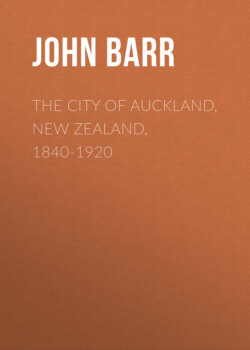Читать книгу The City of Auckland, New Zealand, 1840-1920 - John Barr - Страница 14
На сайте Литреса книга снята с продажи.
VIII
Ancient Maori Society—A Retrospect
ОглавлениеTable of Contents
Before going any further, a brief outline of the daily life of the Maori community should be of interest.
The tribes of Tamaki lived in village communities, each hapu, or community, consisting of a group of families, more or less closely inter-related, and governed according to various customary usages by their hereditary chiefs. These communities collectively acknowledged the superior prestige of an Ariki, or hereditary high chief.
The religious side of life was the province of their “tohungas,” or priests, the priesthood being also hereditary within certain families of chiefs.
Each village was a fortress—palisaded and parapeted, with deep trenches and draw-bridges. Every hill-top, headland or locality lending itself to defence was utilised for that purpose.
The aristocratic families lived in elaborately built houses (similar to “Rangitihi,” the great carved house in our Museum). The chieftains had their residential quarters in the citadel of the villages; whilst the great mass of the tribesmen lived in mere thatched sheds, or in pit-dwellings. The remains of the latter are numerous throughout the Isthmus.
The plantations were on the easy cultivated flats or slopes surrounding the villages, and were usually so located as to be easily defended against marauders.
Large stores of dried fish and preserved food of all kinds, from forest, stream and sea, were kept in store-houses within each village. To become “short of supplies” was a reflection upon the industry of such a village, which would go to great lengths to conceal such a predicament.
The crops grown were the “taro,” “hue” (gourd), “uwhi” (yam), and “kumara.” This latter was indeed the “staff of life,” and its cultivation occupied much of the time and industry of the people. At harvest time these crops were gathered into the store-houses and pits for winter use.
At early dawn the people were astir and about their daily duties. After the morning meal, the cultivators went forth to the plantations, the fishers to the sea, and the hunters to the forest. Other men were engaged in the building of houses or canoes, in which the art of the carver was utilised, or in the making of stone implements or weapons, whilst the women of rank directed and actively took part in the domestic arts—garment weaving, mat and kit plaiting, etc.
No individual was idle; to be so was a reproach, and a failing not tolerated. The whole idea pervading the community was the public weal, and each individual did his or her “bit,” not for individual profit, but pro bono publico.
At sundown the people withdrew to their villages for the night. The gateways were closed, and sentries were posted on the parapets. By their watch-songs and calls throughout the night, the sentries answered one another from village to village.
Within doors the communities, by night, amused themselves and their visitors with dancing, songs and folk-tales of ancestral doings. Such relaxation is, indeed, the feature of Maori village life at the present day.
The burial-places of the people were the caverns of the Isthmus, each sub-tribe and family having its own place of sepulchre. In some cases these were in remote places of the forests of Waitakerei, or other secluded localities. Of the many other aspects of ancient Maori social economy, religious rites, etc., and, above all, of the customs connected with war, I must refer those interested to the many excellent books dealing with the subject.
The above sketch will, however, give an idea of the social status of the people in those ancient times, when the events hereinafter described were enacted.
